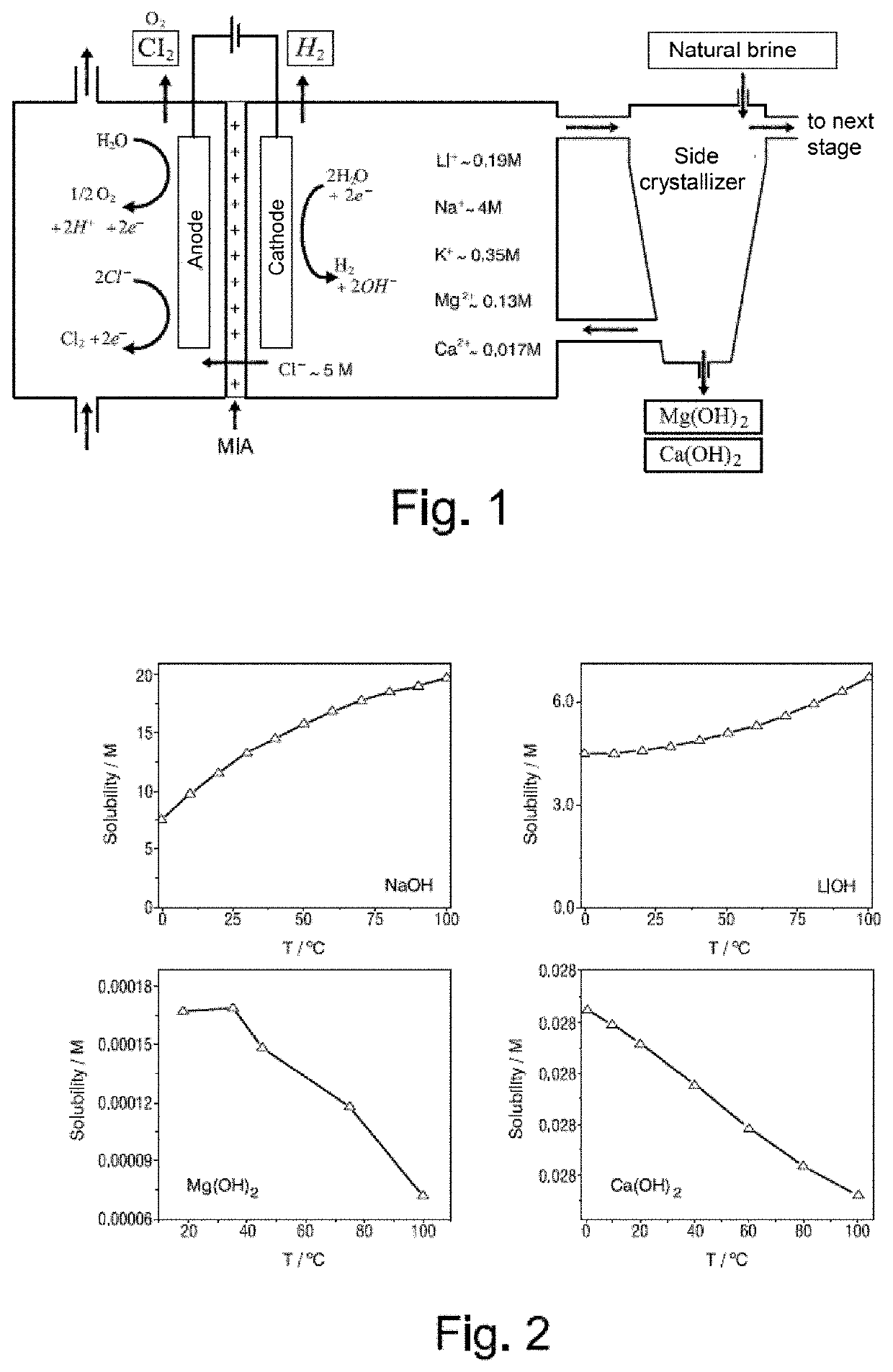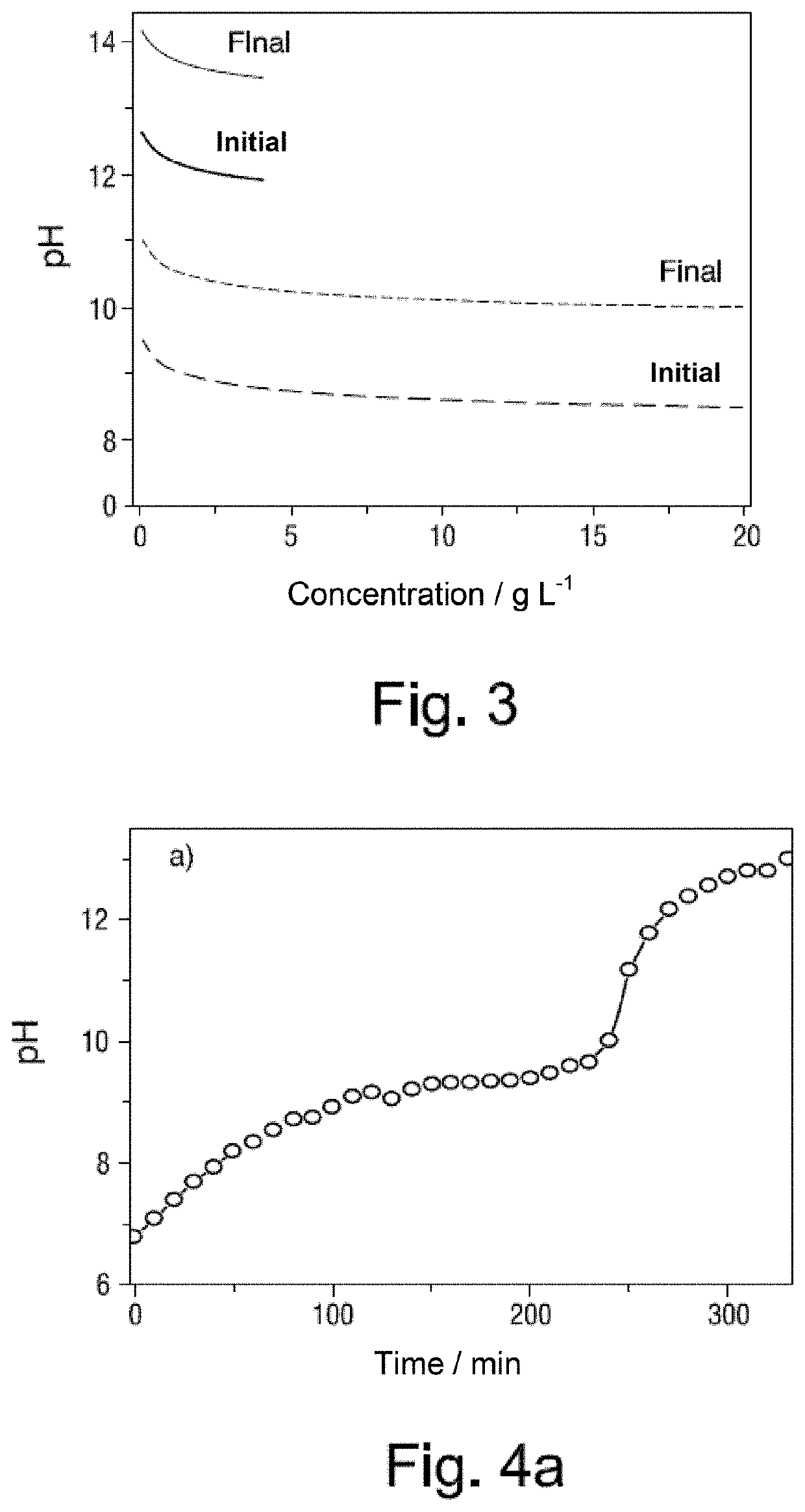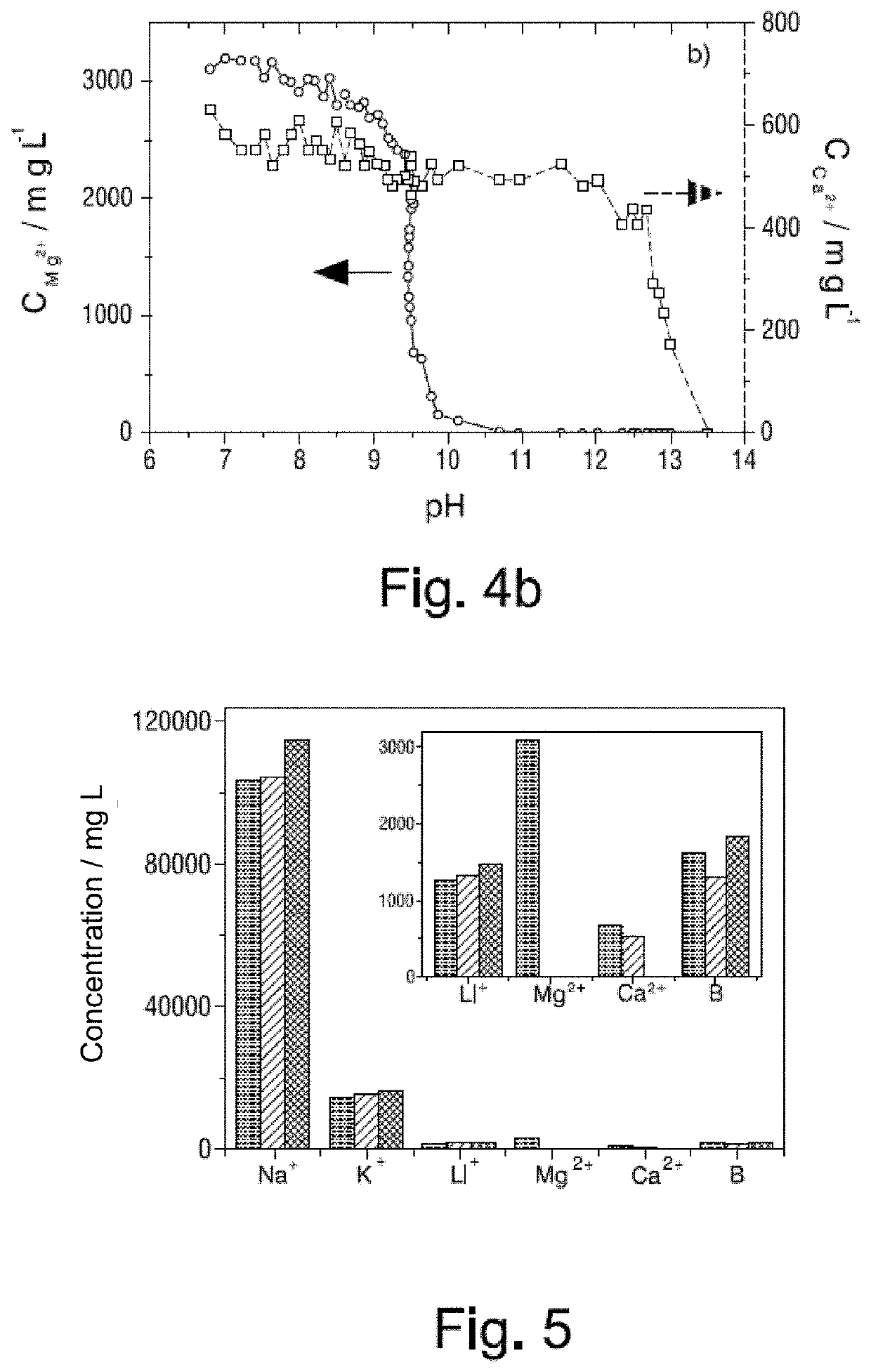Process for the removal of magnesium and calcium cations from natural brines using membrane electrolysis with recovery of cation hydroxides
a technology of cation hydroxide and natural brine, which is applied in the field of lithium recovery from brine, can solve the problems of large residues, difficult separation, and complex composition of brine even more than the original one, and achieve the effect of increasing ph
- Summary
- Abstract
- Description
- Claims
- Application Information
AI Technical Summary
Benefits of technology
Problems solved by technology
Method used
Image
Examples
example 1
[0143]One liter of BI brine of Table T above is provided in the cathodic compartment of an electrolytic reactor and one liter of a 0.1 mol / L NaCl solution is provided in the anodic compartment. Solutions from both compartments are constantly recirculated at a flow rate of 6 L·h−1. Using a direct current source, a current density of 223 A·m−2 is passed for 1 hour 30 minutes at 22° C. In the cathodic compartment, the presence of hydrogen is determined by a flame test. In the anodic compartment, the presence of chlorine is determined by the wet litmus paper test. A whitish precipitate appears in the side crystallizer of the cathodic compartment within 3 minutes of starting the electrolysis. It is visually observed that the amount of precipitate in the side crystallizer increases with the electrolysis time. The aim of this assay was to identify the gases produced in anode and cathode.
example 2
[0144]One liter of BI brine of Table I above is provided in the cathodic compartment of an electrolytic reactor and one liter of a 0.1 mol / L KNO3 solution is provided in the anodic compartment. Solutions from both compartments are constantly recirculated at a flow rate of 6 L·h−1. Using a direct current source, a current density of 223 A·m−2 is passed for 1 hour 30 minutes at 22° C. In the cathodic compartment, the presence of hydrogen is determined by a flame test. In the anodic compartment, the presence of hydrogen is determined by a flame test. A whitish precipitate appears in the side crystallizer of the cathodic compartment within 3 minutes of starting the electrolysis. It is visually observed that the amount of precipitate in the side crystallizer increases with the electrolysis time. The aim of this assay was to identify the gases produced in anode and cathode.
example 3
[0145]One liter of BI brine of Table I above is provided in the cathodic compartment of an electrolytic reactor and one liter of a 0.5 mol / L sodium carbonate / bicarbonate buffer solution, pH=10, in the anodic compartment. Solutions from both compartments are constantly recirculated at a flow rate of 6 L·h−1. A current density of 223 A·m−2 is passed at 22° C. pH is measured constantly in the side crystallizer, and when a pH=10.5 is reached the electrolysis is interrupted. The electrolysis time to reach that pH value is 233 minutes. The brine solution is centrifuged for 20 minutes at 3,500 rpm. 30 grams of solid and 0.95 L of BI brine are recovered. This remaining brine tested negative for Mg2+, both by ICP-OES and by complexometric titration.
[0146]The cathodic compartment of the electrochemical reactor is rinsed, and the 0.95 L of remaining BI brine, from which Mg2+ has already been extracted, are reintroduced into the reactor. Electrolysis is continued with the same recirculation flo...
PUM
| Property | Measurement | Unit |
|---|---|---|
| pH | aaaaa | aaaaa |
| temperature | aaaaa | aaaaa |
| mass ratio | aaaaa | aaaaa |
Abstract
Description
Claims
Application Information
 Login to View More
Login to View More - R&D
- Intellectual Property
- Life Sciences
- Materials
- Tech Scout
- Unparalleled Data Quality
- Higher Quality Content
- 60% Fewer Hallucinations
Browse by: Latest US Patents, China's latest patents, Technical Efficacy Thesaurus, Application Domain, Technology Topic, Popular Technical Reports.
© 2025 PatSnap. All rights reserved.Legal|Privacy policy|Modern Slavery Act Transparency Statement|Sitemap|About US| Contact US: help@patsnap.com



